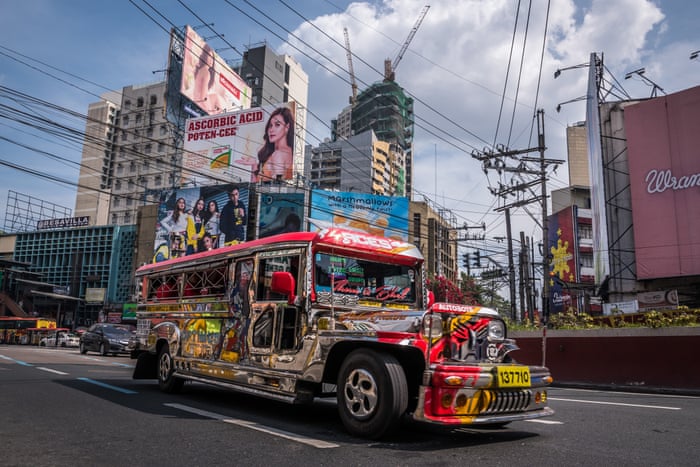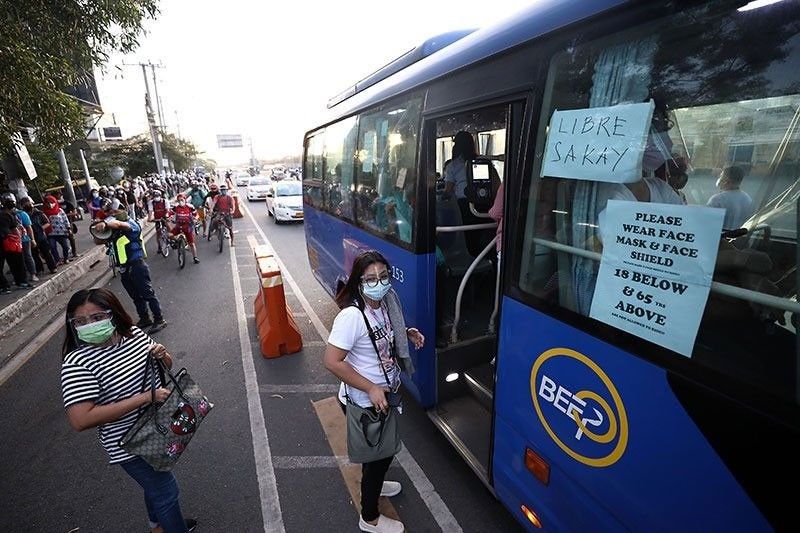Economical Transit Advertising Philippines for Brand Understanding
Economical Transit Advertising Philippines for Brand Understanding
Blog Article
Recognizing the Role of Transit Advertising And Marketing in Enhancing Brand Presence and Consumer Interaction
Transit marketing has become a pivotal aspect in the advertising and marketing landscape, providing one-of-a-kind opportunities for brand names to boost their visibility and engage customers properly. With the ability to reach a varied and restricted target market throughout their daily commutes, these marketing methods are not just about visibility; they have to do with producing purposeful connections with potential clients. As we check out the complex advantages and innovative approaches within transit marketing, it comes to be essential to consider how these elements jointly affect customer assumption and habits, increasing questions regarding their long-lasting effect on brand loyalty.
Definition of Transit Advertising And Marketing
Transportation marketing refers to the practice of advertising items, services, or brands via promotions put in and around public transport systems. This kind of marketing encompasses a variety of positionings, including posters on buses and trains, electronic displays at transit terminals, and wraps on the exterior of automobiles. It aims to get to a varied audience, taking advantage of the high foot website traffic connected with public transit.
Transportation advertising is tactically positioned to catch the attention of travelers, who often invest considerable time traveling or waiting. By incorporating ads into the everyday routines of individuals, brand names can produce a lasting perception and foster brand recognition. The medium is especially effective in metropolitan settings, where public transport is a key mode of traveling.
Additionally, transportation advertising and marketing can help with local targeting, allowing services to get to particular demographics based upon transit paths and terminal locations. As metropolitan populaces grow and the use of public transportation increases, this marketing approach has actually acquired importance as an essential component of integrated advertising and marketing strategies. The dynamic nature of transit marketing, incorporated with its ability to engage consumers in a captive setting, emphasizes its significance in contemporary marketing techniques.
Advantages of Transit Advertising
The efficiency of transportation advertising depends on its ability to deliver a wide range of advantages to brand names seeking to boost visibility and interaction. One of the primary advantages is the considerable reach it uses; transit ads can effectively target varied demographics throughout metropolitan areas, getting to both pedestrians and commuters alike. This broad exposure substantially increases brand name awareness.
An additional advantage is the high regularity of impressions. As transportation lorries follow established courses and quit at several areas, they create recurring direct exposure that reinforces brand messages. This frequency fosters experience, which is critical in customer decision-making.
Transit marketing is additionally economical compared to other media systems. Given its large reach and possibility for high impressions, brands often experience a reduced price per thousand impressions (CPM), maximizing their advertising budget plan.
Moreover, transit advertisements can develop a sense of area link. By aligning with regional transportation systems, brands can reverberate with local target markets and cultivate a feeling of neighborhood pride. This localized technique enhances brand name commitment and involvement, making transportation advertising and marketing an engaging option for businesses intending to strengthen their presence on the market.

Effective Strategies for Transportation Projects
To take full advantage of the impact of transit campaigns, brands need to leverage strategic preparation and implementation tailored to visit their website their target market. First, determining the demographic qualities of the audience making use of public transit is essential. This enables brand names to develop personalized messaging that reverberates with potential consumers.
Next, picking the best transportation mediums is crucial. Whether utilizing bus covers, metro posters, or electronic displays, each medium has special advantages that can improve presence. For instance, vibrant visuals on bus wraps can stand out, while electronic advertisements can be upgraded often to show timely promotions.
Moreover, integrating a cohesive branding approach throughout transportation platforms guarantees uniformity and strengthens the brand's identification. Making use of unforgettable taglines and appealing designs will certainly enhance brand name recall among travelers.
By employing these approaches, brand names can effectively harness the possibility of transit advertising, promoting better understanding and connection with their target audience. Eventually, a well-executed transportation campaign can drive considerable development in brand name exposure and customer involvement.

Gauging Impact and Involvement
In reviewing the performance of transportation advertising projects, precise dimension of effect and involvement is vital for brand names looking for to optimize their marketing techniques. Metrics such as reach, frequency, and perceptions supply foundational data to assess exposure. Evaluating these variables aids determine just how numerous potential clients are subjected to the promotions during their everyday commutes.
Involvement can be further more info here assessed through customer interactions, such as site traffic, social media sites points out, and direct feedbacks to calls-to-action featured in the ads. Using tools like QR codes or special Links can assist in tracking of consumer behavior straight linked to transportation campaigns. Surveys and responses devices additionally act as beneficial techniques to gather qualitative data on customer assumptions and recall of the promotion.
Furthermore, advanced analytics and attribution models can associate transportation direct exposure with succeeding buying behavior, providing understandings into the roi. By utilizing a thorough method that incorporates qualitative and measurable procedures, brands can create a nuanced understanding of their transportation advertising and marketing impact. Ultimately, this data-driven approach enables brand names to refine their campaigns, guaranteeing they resonate properly with target audiences and enhance general brand name presence.
Situation Researches of Effective Campaigns
Successful transportation marketing projects act as compelling examples of just how reliable approaches can elevate brand name presence and engagement. Transit Advertising Philippines. One notable instance is the "I Love New York" campaign, which changed the city's image and attracted millions of vacationers. By using train advertisements, signboards, and bus wraps, the campaign produced a strong, cohesive brand name identity, causing a significant uptick in tourist and neighborhood business patronage
One more exemplary campaign is Coca-Cola's "Share a Coke" effort, which leveraged transportation marketing to individualize the brand name experience. By featuring prominent names on advertising see this website materials across numerous transit systems, Coca-Cola fostered a deeper psychological link with customers, encouraging them to share their experiences on social media sites.
Additionally, the "Got Milk?" campaign efficiently utilized mass transit ads to reach a wide audience, reinforcing the message of the value of milk in a well balanced diet plan. The campaign saw a quantifiable rise in milk consumption in target demographics.
These case researches show that when carried out thoughtfully, transportation advertising and marketing can significantly boost brand name presence, foster customer engagement, and drive quantifiable outcomes, showing its important duty in modern advertising and marketing techniques. - Transit Advertising Philippines
Verdict
Finally, transit marketing works as an important device for boosting brand name visibility and promoting consumer involvement. By using tactically placed promotions within public transport systems, brand names can effectively enhance and reach diverse target markets acknowledgment through consistent exposure. The application of targeted messaging and innovative techniques further magnifies the effect of transportation projects. Ultimately, the capability to measure interaction and evaluate effective situation research studies underscores the effectiveness of transit advertising in driving brand commitment and customer communications.
Transit marketing has actually arised as a critical aspect in the advertising landscape, using unique chances for brands to boost their visibility and involve consumers efficiently.Additionally, transportation advertising can help with localized targeting, permitting businesses to reach certain demographics based on transportation courses and terminal places.In reviewing the efficiency of transportation advertising and marketing projects, accurate measurement of effect and interaction is crucial for brands seeking to enhance their advertising approaches.Effective transportation advertising and marketing projects offer as engaging instances of how efficient methods can elevate brand visibility and interaction.In final thought, transit advertising serves as an important device for improving brand exposure and promoting customer interaction.
Report this page